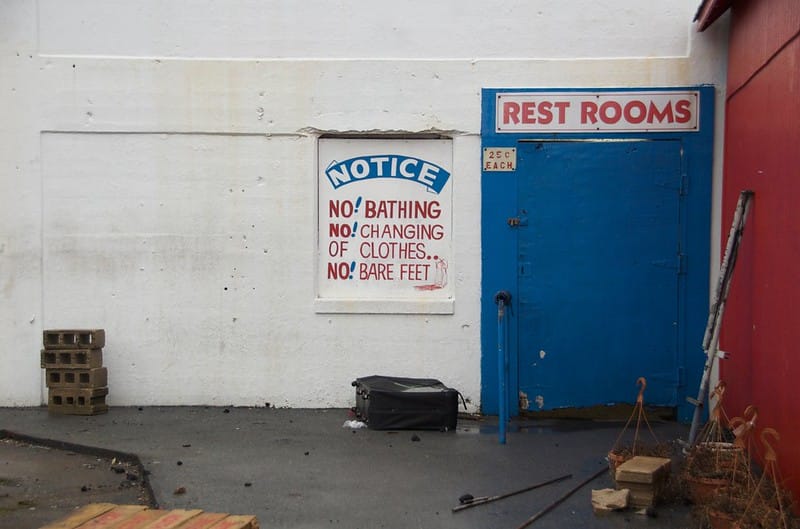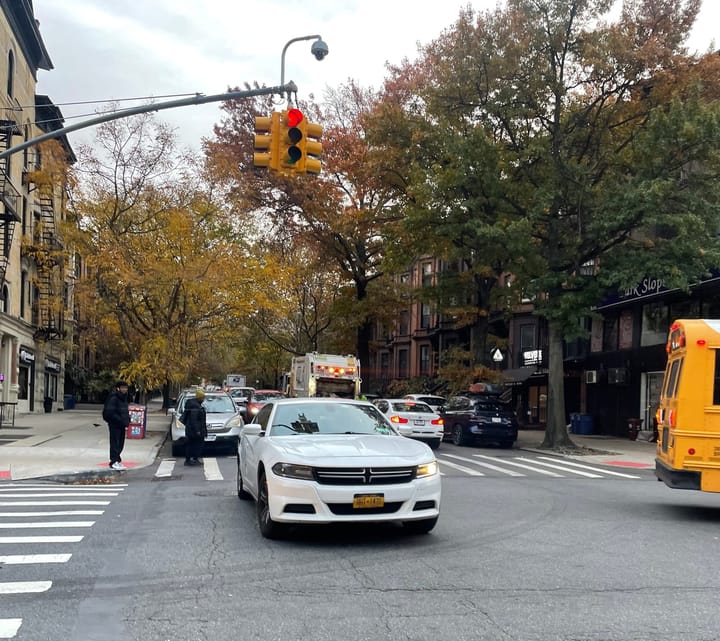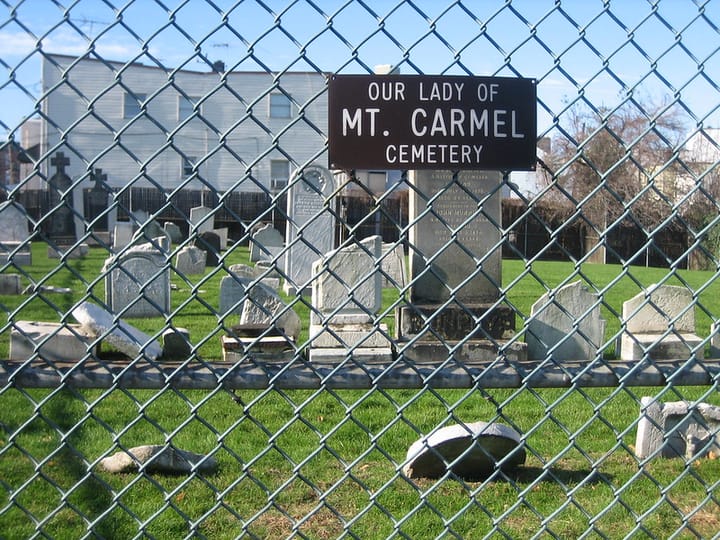Why aren’t there dedicated changing rooms at the beaches any more?
All we have now are grimy public restrooms to change our clothes, but it wasn't always that way.

Here’s a situation you can almost certainly expect to encounter this summer: you’re wet, and you wish you weren’t.
Fixing this problem involves any number of solutions when you’re at the beach: you can lay on your blanket for another half hour to dry out; you can wrap a towel around yourself to change, hoping it doesn’t accidentally slip, flashing the many children standing nearby; or, you can cram yourself into a toilet stall at the public bathrooms, trying to invent a new kind of hopping around so that neither of your bare feet makes any contact with the grimy floor tiles, maybe holding the broken stall door shut with one hand, shimmying on your jorts with the other. It’s an ignoble way to change your clothes in a city that claims to be one of the great waterfront metropolises of the world.
There must be a better way, right?
Lesser beach towns down in New Jersey and out on Long Island welcome residents with dedicated changing rooms for getting into or out of your bathing suit (or whatever you want to wear, we’re not the changing room police). Vintage beach postcards show bathing houses that lined the Coney Island boardwalk; other beaches across the world, from Cape Cod to Italy, manage a little shack on the beach or a booth attached to the bathroom to make for an easy change. Can’t New York City do better? Well, we used to, for a time at least.
Blame the economic downturn of the 1970s, changing fashion technology, and some nasty fires, according to Coney Island’s historian. From about the 1860s to the early 1970s, Coney Island was a vacation destination, and the boardwalk and neighborhood were full of bathhouses that contained changing rooms, and much more.
“That was really about the biggest business in Coney Island for many years,” Charles Denson, executive director of the Coney Island History Project, told The Groove.
In addition to changing rooms, the facilities had steam rooms, salt-water swimming pools, restaurants and lockers where you could actually store your stuff for the day instead of awkwardly carrying it with you on the Cyclone line.
“It was a cultural thing, there were clubs that people belonged to,” Denson said.
These were fancy times, when you’d show up to the beach in formal dress, and rent a swimsuit and beach equipment from the bathhouse. Before the boardwalk was built, paying to enter the bathhouse was the only way to get on to the beaches, which were private at the time. It’s a far cry from our anything-goes beach culture now, where the boardwalk dress code has dropped from its prim origins to whatever we call it when guys just show up wearing a bunch of snakes on their shoulders.
“It used to be, you couldn't go on the boardwalk with a swimsuit,” Denson said. “It was all very Victorian. Men had to wear tops.”
The same went for the beaches in the Rockaways, where private bath houses also once gave beachgoers somewhere to change. The apex of the bunch was the majestic art deco bath house at Jacob Riis Beach, which opened in 1932 as a bathhouse for the masses, but closed to the public in the 1970s.
A 2017 op-ed in The New York Daily News pointed out that the city’s lack of changing facilities was lagging far behind the more than 80 beaches across the state that do offer people a private place to get into and out of clothes.
“All have free to use changing areas apart from the toilets,” the op-ed states. “How can the city do any less?”
The way the city managed to do less was by not doing anything at all. Denson said that in the 1960s, Coney Island became less of a vacation destination. Car ownership boomed after World War II, and car ownership enticed people to visit farther flung destinations outside the five boroughs, another bang-up achievement for car culture.
Then, the ocean became more polluted, driving more people away, while also closing down many of the bathhouse pools that were filled with ocean water. General decay set in during the ‘70s, as crime and underinvestment affected business in all parts of the city, including the beaches and bathhouses. It’s not a coincidence the old Stauch’s Bathhouse, decrepit and crumbling, is featured prominently in the finale of The Warriors. Many of the bathhouses were old wooden buildings that eventually burned down too; others were demolished to make way for rides.
But even then, culture was changing around swimming. Quick-dry bathing suits were invented around the middle of the 20th century, replacing the heavy, wool (yes, wool) suits bathers used to rent.
People then became what Denson called “drippers”: no longer forced to wear stuffy outfits after the beach, people became OK with just letting themselves be a little wet.
“You could just lie there in the sun and dry off,” he said. “The (bathhouse) clientele just kind of died off.” The last of the bathhouses closed in the late ‘70s.
And yet, many generations of New Yorkers now have packed themselves, and their squirming kids, into a sopping wet, sand-covered stall in the boardwalk public bathrooms in the Rockaways to try to swap wet clothes for dry ones. This is a normal activity people want to do at the beach all the time, and there’s somehow no space for it. (Orchard Beach in The Bronx is one of the few exceptions).

To me, this feels like a part of the particular strain of urban planning that pretends to not know how regular people act in their day-to-day lives and therefore doesn’t prepare at all, aside from posting the occasional “no changing of clothes” signs in public restrooms. It’s that line of thinking that gives us stuff that looks good on paper but stops short of what an actual human in the real world would need.
For instance, the city both disdains the patina of piss smell that covers every single inch of streets in the summer, yet we have not made great strides in providing public bathrooms, or opening private ones to the public. We deride dirty parks, but there never seem to be enough places to put the trash. We build bike lanes that end in oncoming traffic, we declare remote learning days on days when kids definitely were not going to show up for remote learning. These basic hiccups in human reasoning might be due to budget cuts or the endless bureaucracy of a large city. But we just cracked the groundbreaking idea that having somewhere to put all our trash might be a good thing, so even the most obvious ideas take far too long.
Every now and then, someone brings up the idea of bringing back a bathhouse or similar facility for beachgoers, Denson said, but it never really goes anywhere.
I checked in with Belvy Klein, who runs Rockaway Bazaar, which oversees the concessions and music on the boardwalk. He said a discussion about adding changing rooms hasn’t really come up, “but we would welcome changing rooms if Parks and the city were able to build/provide infrastructure for them.” Klein is also part of a group leading the long-awaited $50 million renovation to the Riis bath house, which is adding bars, restaurants, a hotel and event spaces, though changing rooms were not listed among the renovations.
Ruby Jacobs — the founder of the eponymous, longstanding Coney boardwalk establishment — originally owned bathhouses before buying the bar. The current Ruby’s owners have talked about installing lockers to allow people a chance to store beach gear, but it never came to be.
“Having a lot of people crowded around naked inside changing rooms, people don’t really do that any more,” Denson said. “People want privacy, that takes up a lot of real estate.”




Comments ()